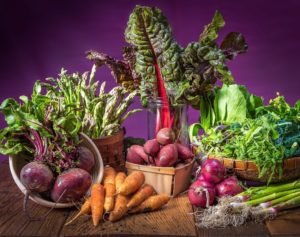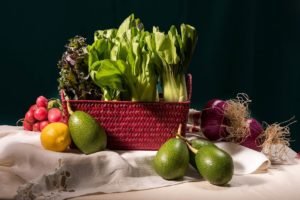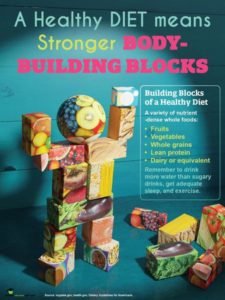Building Blocks of Health: Vegetables
We all know that vegetables play a key role in good health, but despite this knowledge, most Americans aren't getting enough.According to the 2020-2025 Dietary Guidelines for Americans, "The average American diet scores a 59 out of 100 on the Healthy Eating Index (HEI), which measures how closely a diet aligns with the Dietary Guidelines. Research shows that higher HEI scores can improve Americans health."Furthermore, the study Association Between Dietary Factors and Mortality From Heart Disease, Stroke, and Type 2 Diabetes in the United States attributed 53,410 deaths in 2012 from heart disease, stroke, or type 2 diabetes to consuming too few vegetables (source). Benefits of a Vegetable-Rich Diet:MyPlate maintains, "Eating vegetables provides health benefits — people who eat more vegetables and fruits as part of an overall healthy diet are likely to have a reduced risk of some chronic diseases. Vegetables provide nutrients vital for health and maintenance of your body."Which nutrients? Here's a small sample of what nutrients are common among vegetables and their role in your health...
Benefits of a Vegetable-Rich Diet:MyPlate maintains, "Eating vegetables provides health benefits — people who eat more vegetables and fruits as part of an overall healthy diet are likely to have a reduced risk of some chronic diseases. Vegetables provide nutrients vital for health and maintenance of your body."Which nutrients? Here's a small sample of what nutrients are common among vegetables and their role in your health...
- Let's start with vitamin A, which shows up in a variety of vegetables. "Vitamin A keeps eyes and skin healthy and helps to protect against infections" (source).
- Vitamin C is often found in vegetables too. "Vitamin C helps heal cuts and wounds and keeps teeth and gums healthy. Vitamin C helps your body absorb iron more easily" (source).
- Fiber is amazing, and vegetables are full of it! "Dietary fiber from vegetables, as part of an overall healthy diet, helps reduce blood cholesterol levels and may lower risk of heart disease" (source).
- And who could forget folate? "Your body needs folate to make DNA and other genetic material" (source).
- Many vegetables are also high in potassium, which "may help to maintain healthy blood pressure" (source).
 How Many Vegetables Should I Eat Each Day?MyPlate recommends that most adults eat roughly 2.5 cups of vegetables per day. You can get a personalized recommendation here!Remember, vegetables can be "raw or cooked; fresh, frozen, canned, or dried/dehydrated; and may be whole, cut-up, or mashed" (source).And there are all kinds of vegetables. To get the best variety, try to eat a bunch of different vegetables each week. The main types of vegetables are dark and leafy greens, red and orange vegetables, beans, peas and lentils, starchy, and other.
How Many Vegetables Should I Eat Each Day?MyPlate recommends that most adults eat roughly 2.5 cups of vegetables per day. You can get a personalized recommendation here!Remember, vegetables can be "raw or cooked; fresh, frozen, canned, or dried/dehydrated; and may be whole, cut-up, or mashed" (source).And there are all kinds of vegetables. To get the best variety, try to eat a bunch of different vegetables each week. The main types of vegetables are dark and leafy greens, red and orange vegetables, beans, peas and lentils, starchy, and other. Five Favorite Vegetable Recipes:Sometimes it's tough to determine where to start, so I've rounded up five of my most popular vegetable recipes! Which will you try first?
Five Favorite Vegetable Recipes:Sometimes it's tough to determine where to start, so I've rounded up five of my most popular vegetable recipes! Which will you try first?
- Berkeley Burrito Bowl
- Cauliflower Torte
- Kale is the Star Salad
- Lentil Quinoa Salad Bowl
- Pasta with Roasted Tomato Sauce
And that brings us to the end of our first installment in the Building Blocks of Health series. Later this week, we'll bring you another amazing post, this time about fruits. Stay tuned! #BEST21 References:
References:
- https://www.dietaryguidelines.gov/resources/2020-2025-dietary-guidelines-online-materials/top-10-things-you-need-know-about-dietary
- https://jamanetwork.com/journals/jama/fullarticle/2608221
- https://www.pcrm.org/good-nutrition/nutrition-programs-policies/2020-2025-dietary-guidelines
- https://www.myplate.gov/eat-healthy/vegetables
- https://ods.od.nih.gov/factsheets/Folate-Consumer/
- https://www.myplate.gov/myplate-plan


